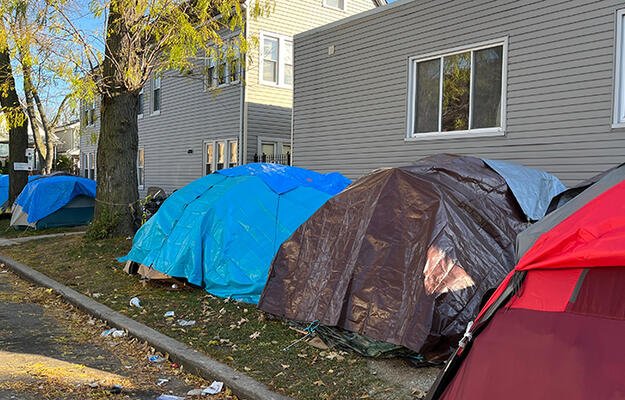
Unifying Families with an Affordable Home
Poor housing situations, such as living on the street or being doubled up with other families, threaten children’s safety and well-being and can be at the root of a family’s involvement in the child welfare system.
According to a 2013 study published in the American Journal of Community Psychology, children in about 16 percent of intact families being investigated by child protective services were at risk of foster care placement because of inadequate housing. Once these children enter foster care, their risk of homelessness, joblessness, teen pregnancy, and not finishing high school, among other problems, can skyrocket—if they have not been exposed to these risks already.
“Housing is a main component of what the courts look for in a custody case,” says Kristen Brennan, director of young adult services for the YMCA of Greater Seattle. “And it’s often the last piece [of a larger puzzle] before the courts will step out of a family’s case.”
A little-known federal program called the Family Unification Program (FUP) uses stable housing as a keystone for keeping children out of foster care or paving their way out of it. This U.S. Department of Housing and Urban Development initiative offers housing vouchers and supportive services that help low-income families overcome the barriers of staying together as well as provide a safety net for youths aging out of foster care.
“A home is not just a structure that keeps out the wind, freezing temperatures, or rain,” says Jennifer Anderson, resident commissioner of Home Forward, the housing authority for Portland, Oregon. “It’s a place to belong—and belonging and security can help families thrive.”
Keeping Families Together
FUP sets aside a limited number of housing choice vouchers at participating housing authorities for three groups:
- families at imminent risk of child placement in out-of-home care, primarily due to inadequate housing;
- families for whom inadequate housing is delaying reunification with a child currently in out-of-home care; and
- youths (18 to 21 years old) who left foster care at age 16 or older and who do not have adequate housing as they move into adulthood.
Eligible families are identified by the local child welfare agency or are referred by community organizations. Caseworkers determine which families will be referred to the housing authority for verification of eligibility for vouchers.
Though FUP meets an important need, experts say that with 20,000 vouchers in circulation in 2013, there just are not enough to go around. And families that do get help may not get it soon enough.
“These families are homeless or have inadequate housing, but the process to get them a voucher and leased up in housing can be extremely lengthy and complicated to navigate,” says the Urban Institute’s Michael Pergamit, who has studied FUP at eight locations across the country and written a report on the subject.
Because of the shortage of vouchers and the complexity of using them, identifying families and youths most in need of FUP assistance is critical.
Establishing a Support System
Mary Cunningham, a senior fellow at the Urban Institute and Pergamit’s coauthor on the FUP study, says that ideally the program increases collaboration among public housing authorities, child welfare agencies, and social services organizations that deal with families at risk of separation. In places such as Seattle and Portland, she says, nonprofit organizations involved in the unification program assist families in their search for housing and offer free legal aid and health care to families that receive a voucher.
These partnerships can help families through the process of being issued a voucher and leasing housing, which can be complicated and overwhelming for families in crisis.
In 2015, the YMCA of Greater Seattle and Home Forward each helped more than 25 families and individuals avoid or leave foster care through housing made affordable by FUP. The two organizations report success at placing families and keeping them housed, but there is still a long way to go to establish standards of success that can lead to greater support for the program across the country. A follow-up report to be released by the Urban Institute this spring will answer some of the remaining questions.
In the meantime, Kristen Brennan has witnessed astounding turnarounds for some Seattle families. After receiving a FUP voucher and ongoing support from caseworkers, a young mother and former foster youth Brennan works with was able to move into a three-bedroom apartment and maintain custody of her child and three young brothers. The young woman is working toward a career that will provide better opportunities for the whole family, and the children in her care never had to enter the foster care system as she did when she was younger.
“She’s able to work toward something bigger and better,” Brennan says. That is the power of family stability, made possible by stable housing.


